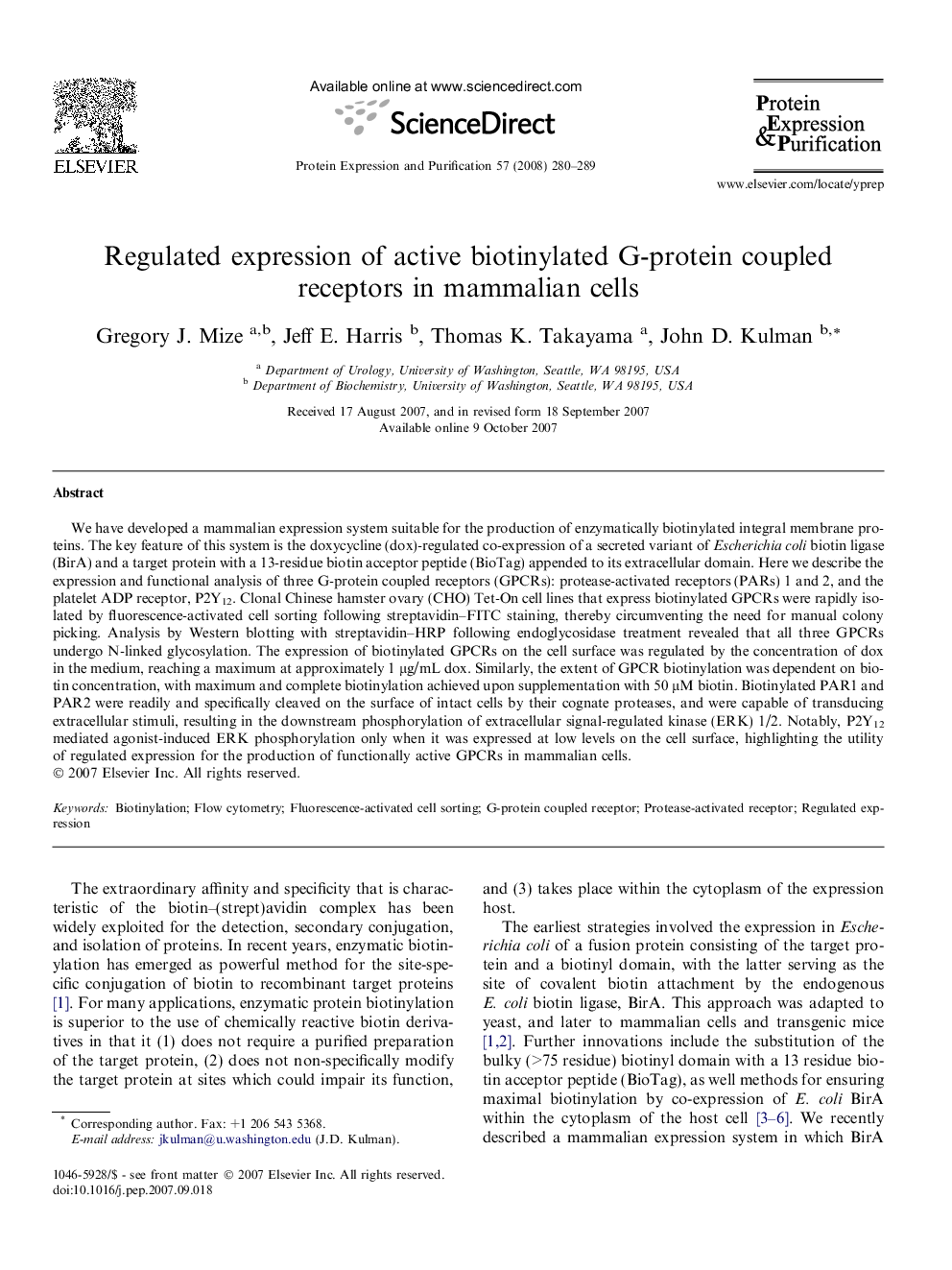| Article ID | Journal | Published Year | Pages | File Type |
|---|---|---|---|---|
| 10843448 | Protein Expression and Purification | 2008 | 10 Pages |
Abstract
We have developed a mammalian expression system suitable for the production of enzymatically biotinylated integral membrane proteins. The key feature of this system is the doxycycline (dox)-regulated co-expression of a secreted variant of Escherichia coli biotin ligase (BirA) and a target protein with a 13-residue biotin acceptor peptide (BioTag) appended to its extracellular domain. Here we describe the expression and functional analysis of three G-protein coupled receptors (GPCRs): protease-activated receptors (PARs) 1 and 2, and the platelet ADP receptor, P2Y12. Clonal Chinese hamster ovary (CHO) Tet-On cell lines that express biotinylated GPCRs were rapidly isolated by fluorescence-activated cell sorting following streptavidin-FITC staining, thereby circumventing the need for manual colony picking. Analysis by Western blotting with streptavidin-HRP following endoglycosidase treatment revealed that all three GPCRs undergo N-linked glycosylation. The expression of biotinylated GPCRs on the cell surface was regulated by the concentration of dox in the medium, reaching a maximum at approximately 1 μg/mL dox. Similarly, the extent of GPCR biotinylation was dependent on biotin concentration, with maximum and complete biotinylation achieved upon supplementation with 50 μM biotin. Biotinylated PAR1 and PAR2 were readily and specifically cleaved on the surface of intact cells by their cognate proteases, and were capable of transducing extracellular stimuli, resulting in the downstream phosphorylation of extracellular signal-regulated kinase (ERK) 1/2. Notably, P2Y12 mediated agonist-induced ERK phosphorylation only when it was expressed at low levels on the cell surface, highlighting the utility of regulated expression for the production of functionally active GPCRs in mammalian cells.
Keywords
Related Topics
Life Sciences
Biochemistry, Genetics and Molecular Biology
Biochemistry
Authors
Gregory J. Mize, Jeff E. Harris, Thomas K. Takayama, John D. Kulman,
